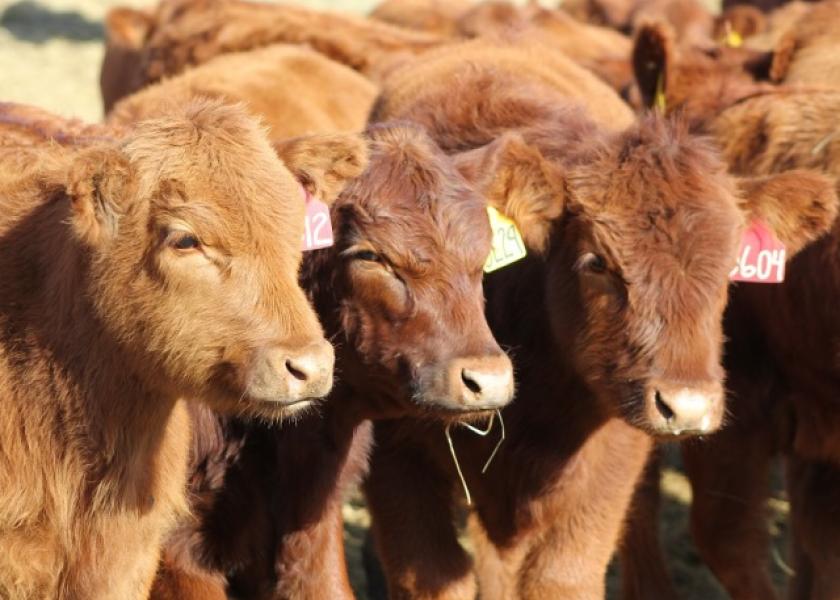Limit-Fed ‘High-Risk’ Cattle: Greater Performance, No Negative Health Effects Found

“High-risk” cattle placed on a limit-fed diet may result in greater performance with no adverse health effects, a study at the Arkansas Agricultural Experiment Station finds.
While providing sufficient energy to achieve a targeted rate of weight gain, yet restricting the amount of feed an animal receives, limit feeding has been shown to reduce waste and improve feed efficiency, says Daniel Rivera, associate professor of animal science with the experiment station, the research arm of the University of Arkansas System Division of Agriculture and the director of the Division of Agriculture’s Southwest Research and Extension Center in Hope, Ark.
“One of the concerns people have with limit-feeding growing animals before they go to a feedlot finishing program is the fear it will lead to digestive upsets because they were restricted and then go into a sort of all-you-can-eat buffet,” says Rivera. “But that was not the case in our study.”
“High-risk” cattle include those with no history or record of vaccination, as well as those transported for an extended period of time and blended with other lots at a sale barn, an Arkansas Agricultural Experiment Station article explains.
Rivera notes the typical management of “high-risk” cattle are often given high levels of hay or forage—often what these cattle are accustomed to—which makes the transition to a milled diet easier. However, data regarding this topic conflicts, Rivera adds, with some researchers noting that higher energy and less roughage results in better performance but greater health problems.
One theory for the increased health problems is that the energy found in a milled diet is typically in the form of starch, which can result in sub-clinical acidosis. Therefore, the study examined limited feeding complete feed pellets made up of high levels of byproducts and lower starch content.
The Study
Including 168 newly received bull and steer calves pieced together from several sale barns in Arkansas and Texas, weighing an average of 470 lbs., cattle were put through a two-month preconditioning phase. This included vaccination against respiratory and clostridial pathogens, deworming and treatment with long-acting antibiotics. The animals were also administered a growth-promoting implant.
The cattle were then fed three diet options, all fed twice daily, including:
1) Fed 1.75% of their body weight in grain byproduct pelleted feed
2) Fed 2.25% of their body weight in grain byproduct pelleted feed
3) Fed 2% of their body weight in grain byproduct pellets and given free access to Bermuda grass hay (control group)
The animals were checked daily for signs of respiratory disease, and symptomatic animals were treated with antimicrobial therapy. Rivera said the cattle that did not initially respond to the treatment were separated and then able to regain health with easier access to feed.
While Rivera notes more work is needed to confirm the study’s findings, following the 63-day study, results showed slightly better feed-conversion rates for the most restricted diet with only marginally lower average daily weight gain. Specifically, the average daily weight gain for cattle on a restricted diet of 2.25% body weight in grain pellets and no hay was the same as those given access to hay and fed 2% of their body weight in grain pellets. Cattle fed 1.75% of their body weigh in grain pellets with no hay put on slightly less than 2 pounds per day, the article explains.







